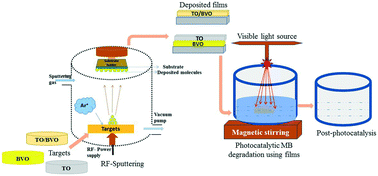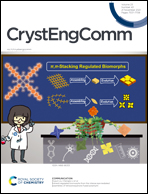Structural features and morphology of titanium dioxide–bismuth vanadate heterojunctions
Abstract
Titanium dioxide TiO2 (TO) and bismuth vanadate BiVO4 (BVO) are promising photoactive semiconducting oxides for heterogeneous photocatalysis devoted to water treatment, pollutant degradation and water splitting processes. This work explores the design of heterojunctions associating the monoclinic scheelite structure of BVO with the anatase polymorph of TO. Their type II band alignment features at the interface ensure efficient photogenerated charge transfer between the structures and improve their lifetime for efficient photocatalytic processes. The RF-sputtering deposition of TO/BVO heterostructures was realized in two configurations. The first heterostructure consists of a composite film of TO/BVO and the second one is TO/BVO/substrate layered structures deposited on various substrates (Borofloat-BK7, aluminium phosphate ceramic (AlPO)). The order of the film deposition ensures harvesting of a wide spectral range of visible light. To stabilize the relevant crystalline structures of both the composite and layered films, the RF-sputtering deposition parameters (RF-power, temperature) and the post deposition annealing treatment conditions were optimized. The structural, optical and morphological analyses of the prepared films were performed and the formation of the band gap engineered heterostructures with good dye degradation efficiency was achieved.

- This article is part of the themed collection: Nanomaterials


 Please wait while we load your content...
Please wait while we load your content...